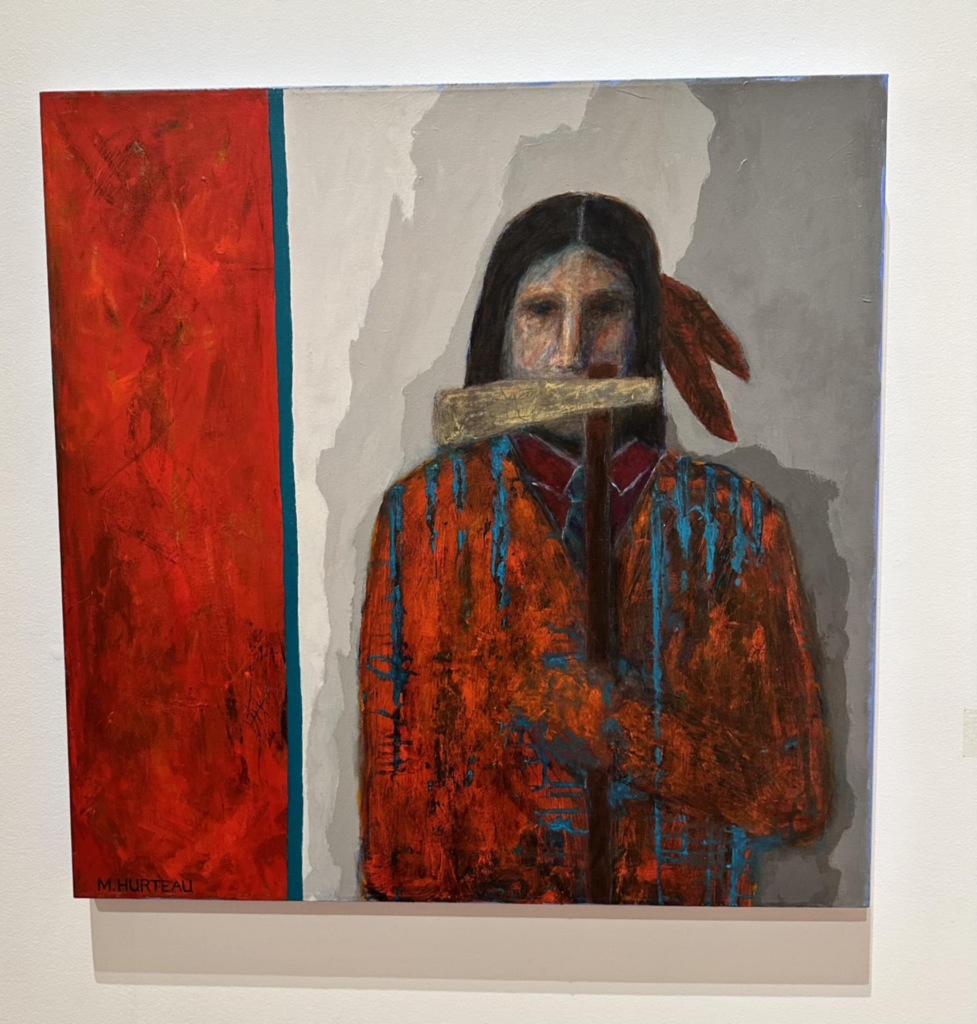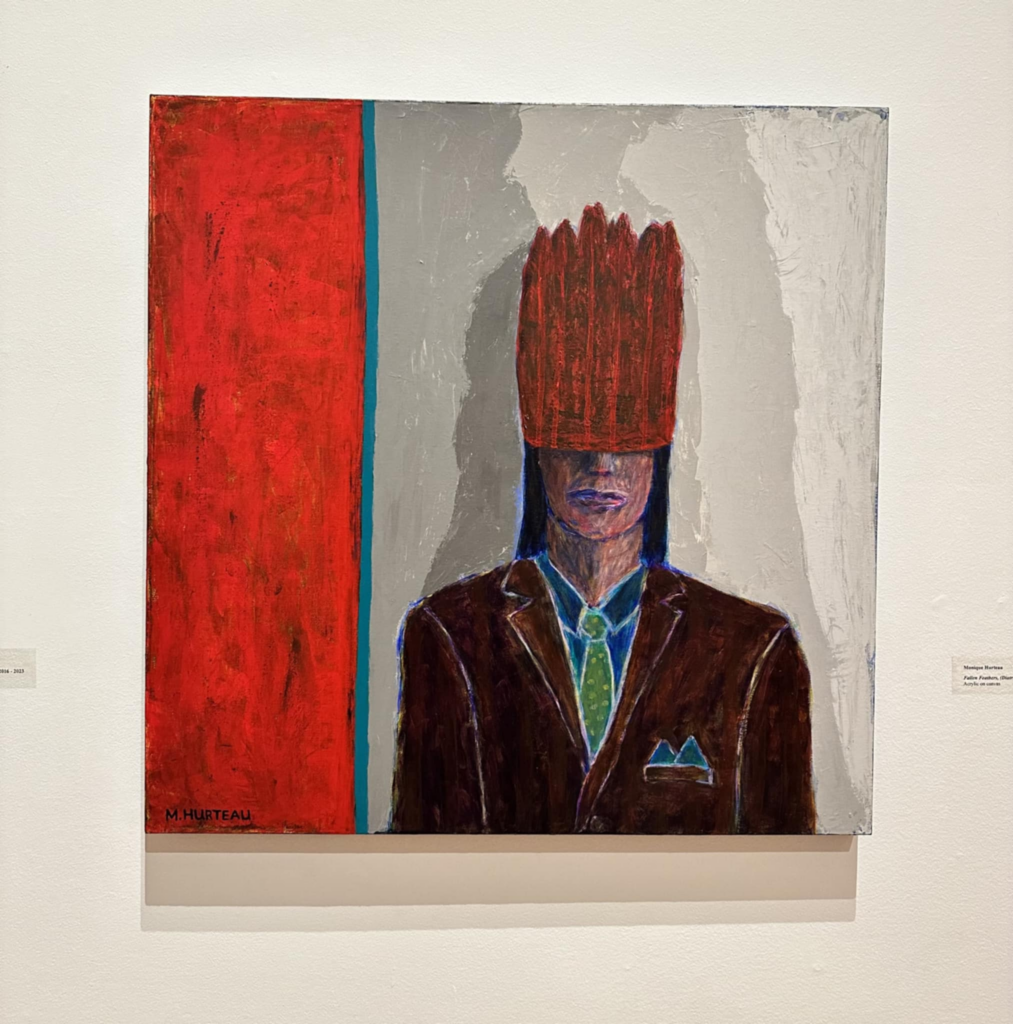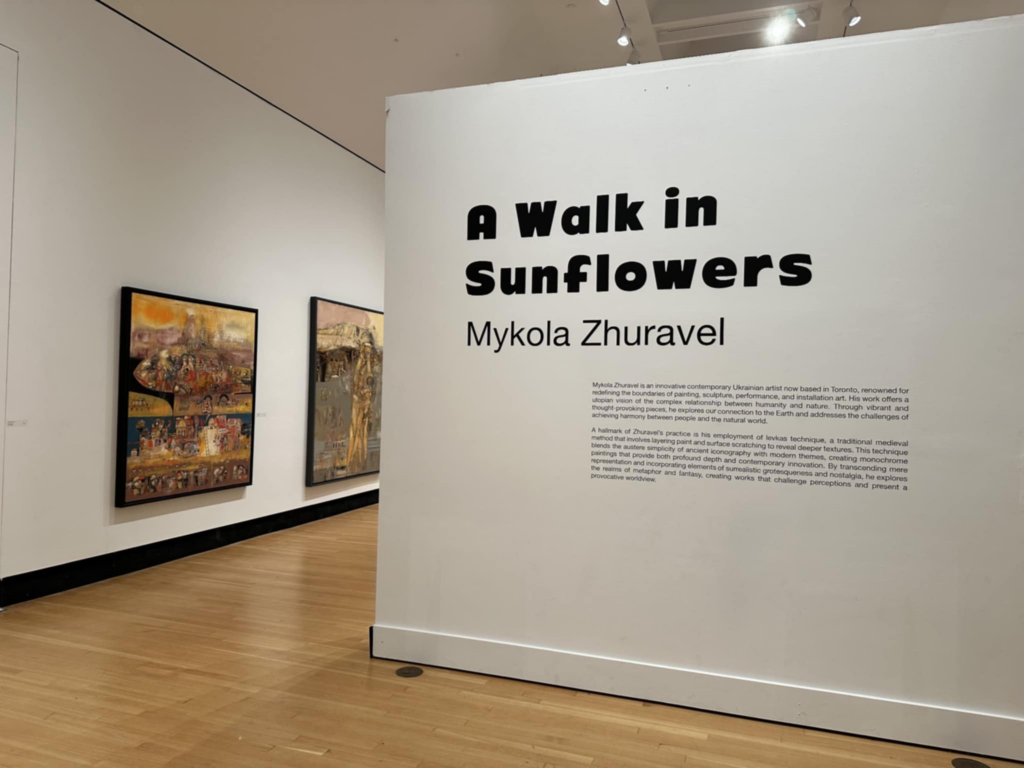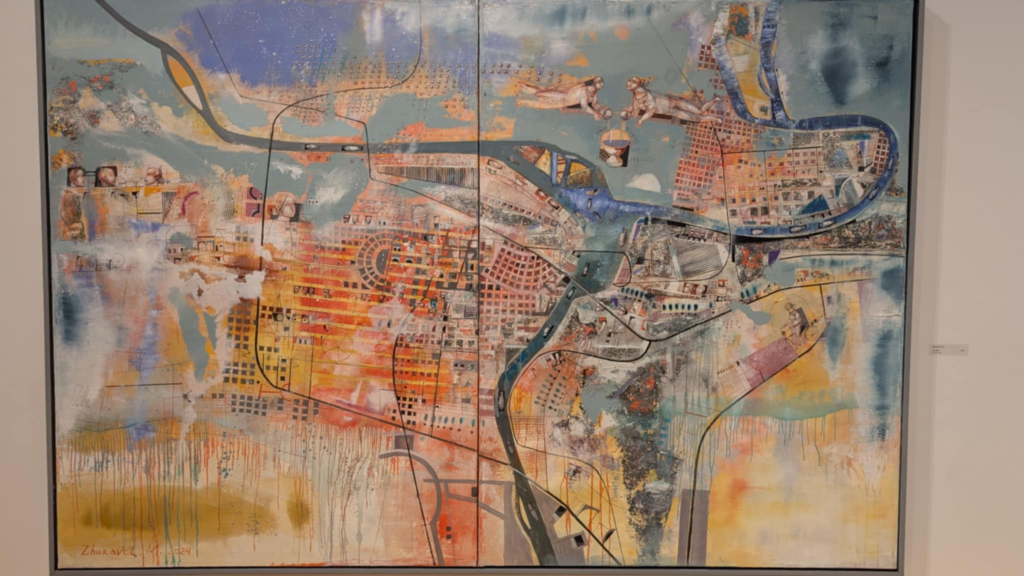
Place-based learning is about engaging with the world around us to deepen our understanding of place, identity, and relationships. During a visit to Two Rivers Art Gallery in Prince George, we immersed ourselves in a powerful exploration of art and its ability to reflect, challenge, and inspire. Through thought-provoking exhibits, we examined our relationship with community, identity, and history, discovering how the stories told through art can teach us about ourselves and the world we share.

The first exhibit we visited was the gallery’s permanent collection. One of the standout pieces, Police Scrum, depicted blacked-out figures in riot gear—a stark, almost oppressive image that invited us to consider power, authority, and control.

Nearby, paintings of Indigenous peoples contrasted sharply in their portrayal. Figures in Western suits were painted with clear, discernible faces, while those in traditional regalia had their faces blurred, almost obscured.
The heavy use of red in these paintings seemed to symbolize the violence of colonialism—a visceral reminder of the harm inflicted on Indigenous communities. These works sparked discussions about representation, identity, and erasure. Who gets to be seen clearly in history, and who is rendered invisible? How does colonialism continue to shape the narratives we tell, and how can art help us confront those truths?

A Walk in Sunflowers by Ukrainian artist Mykola Zhuravel offered an equally impactful exhibit. Among the vibrant works in the collection was Mariupol’s Madonna, a haunting painting of a pregnant woman lying on a stretcher carried by faceless men, surrounded by roses. The piece was chilling, evoking themes of sacrifice, loss, and resilience.

This painting forced me to confront the dualities of being a woman: our strength, even when our worlds are crumbling, and the societal expectations that seek to adorn our pain rather than truly see it. It reminded me of the countless women who have borne the unimaginable and of the importance of creating spaces where our stories can be told without filters or simplifications.

This exhibit reminded us that art is a universal language, one that bridges distances and invites us to see the world through another’s eyes. Zhuravel’s work brought us into a dialogue about global issues. At the same time, it encouraged us to reflect on what resilience and beauty look like in our own community.

Another part of the exhibit featured a map of Prince George, inviting us to reflect on the places we knew and to wonder about the ones we didn’t. Tracing familiar streets and landmarks sparked memories and a sense of connection, while the unknown areas piqued our curiosity. Why had we never been to these places? What histories or stories might they hold? This simple exercise transformed the map into a tapestry of relationships, experiences, and mysteries, encouraging us to see Prince George not just as a physical space but as a living, layered narrative waiting to be uncovered and understood.

This experience at Two Rivers Art Gallery exemplifies the power of place-based learning to connect students to their local community while also fostering a global perspective. Art becomes a tool not only for self-expression but for inquiry, allowing students to ask big questions: What does this mean for me? For my community? For the world?

By immersing ourselves in these exhibits, we didn’t just learn about the art—we learned about ourselves, our city, and the histories that continue to shape us. Place-based learning invites us to think critically about the spaces we inhabit, to uncover stories that have been hidden or overlooked, and to reimagine our roles as active participants in those stories.

As I reflect on this visit, I am struck by how much I learned from simply slowing down and looking closely—at the art, at my community, and at the conversations unfolding around me. This, I think, is the heart of place-based learning: it reminds us that the world is our classroom, and every place has something to teach us if we take the time to listen.
Leave a Reply